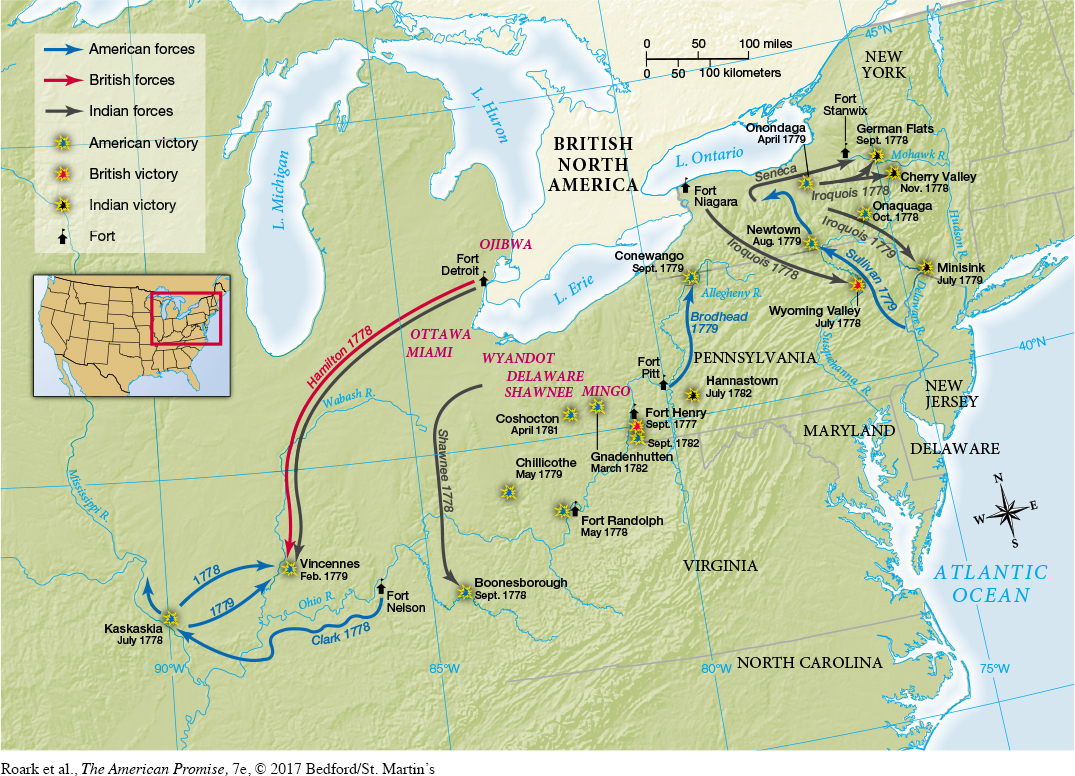The American Promise: Printed Page 185
The American Promise, Value Edition: Printed Page 170
The American Promise: A Concise History: Printed Page 195
The War in the West: Indian Country
Between the fall of 1777 and the summer of 1778, the fighting on the Atlantic coast slowed. But in the interior western areas—
The ambush and slaughter at Oriskany in August 1777 marked the beginning of three years of terror for the inhabitants of the Mohawk Valley. Loyalists and Indians engaged in many raids throughout 1778, capturing or killing inhabi-
The following summer, General Washington authorized a campaign to wreak “total destruction and devastation” on all the Iroquois villages of central New York. Some 4,500 troops commanded by General John Sullivan implemented a campaign of terror in the fall of 1779. Forty Indian towns met with total obliteration; the soldiers torched dwellings, cornfields, and orchards. In a few towns, women and children were slaughtered, but in most, the inhabitants managed to escape, fleeing to the British at Fort Niagara. Thousands of Indian refugees, sick and starving, camped around the fort in one of the most miserable winters on record.
Much farther to the west, beyond Fort Pitt, another complex story of alliances and betrayals between American militiamen and Indians unfolded. Some 150,000 native people lived between the Appalachian Mountains and the Mississippi River, and by 1779 neutrality was no longer an option. Most sided with the British, but a portion of the Shawnee and Delaware at first sought peace with the Americans. In mid-
West of North Carolina (today’s Tennessee), militias attacked Cherokee settlements in 1779, destroying thirty-

By 1780, very few Indians remained neutral. Violent raids by Americans drove Indians into the arms of the British at Forts Detroit and Niagara, or into the arms of the Spaniards, west of the Mississippi River. Said one officer on the Sullivan campaign, “Their nests are destroyed but the birds are still on the wing.” For those who stayed near their native lands, chaos and confusion prevailed. Rare as it was, Indian support for the American side occasionally emerged out of a strategic sense that the Americans were unstoppable in their westward pressure and that it was better to work out an alliance than to lose in a war. But American treatment of even friendly Indians showed that there was no winning strategy for them.